Ladybank’s The Duncan House an architectural marvel
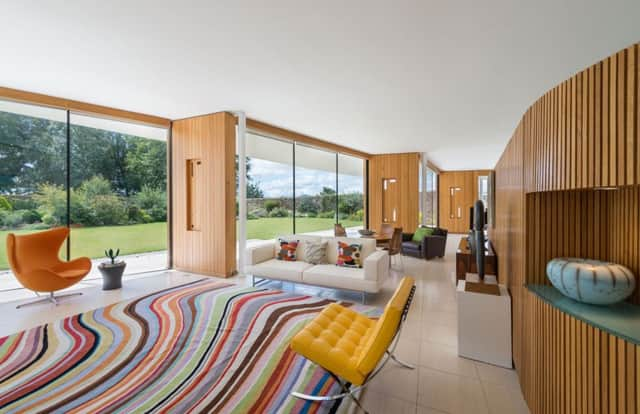

‘I’D NEVER been to Scotland; I’d always wanted to visit but had never done it,” says Ian Lillicrap, as he reflects on what led him to buy a home here in 2008. “Then one Friday I was reading through a newspaper property section and I saw a photo of this house, of the main south elevation, and thought, ‘I love the architecture of that! Where is it?’”
Ian was looking for a second home in Leicestershire, where he grew up, but this house, The Duncan House,is situated at Ladybank in Fife, just 16 miles from St Andrews. Hardly Ian’s target location, but then, as he says: “This house was to die for.” And, he reasoned, why not have a home in a new locality, one he hadn’t explored?
Advertisement
Hide AdAdvertisement
Hide AdIt’s easy to understand why Ian’s interest was piqued from one photo when you consider this striking property, which was built in 2002 and designed by one of the UK’s most respected architects, Gareth Hoskins OBE. In recent years Hoskins Architects has designed a number of major projects, including the redevelopment of the National Museum of Scotland in Edinburgh, and the practice’s ongoing work includes projects at the World Museum in Vienna to a new home for the National Theatre of Scotland in Glasgow.
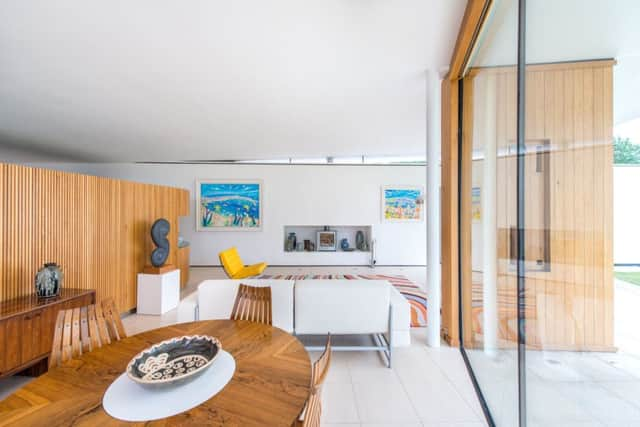

The Duncan House was the first private home Hoskins’ designed after starting his practice.
As Ian explains: “The original owner liked the architecture of Mies van der Rohe and wanted to have a house that was reminiscent of the Barcelona Pavilion” – a building Ludwig Mies van der Rohe designed as the German national pavilion for the 1929 Barcelona International Exhibition. The Duncan House sits within the former walled fruit garden of Kinloch House, and although there are neighbouring properties, this house is tucked behind its historic walls.
Hoskins has written this of the house: “The plan of the house is defined by two thick, white rendered masonry walls that contrast with the grey whinstone of the existing garden walls.
“These walls emphasise connections between old and new, inside and outside. Daylight is maximised by almost half of the external walls being glass… The main spaces are clean and uncluttered, with their main focus on the garden.”
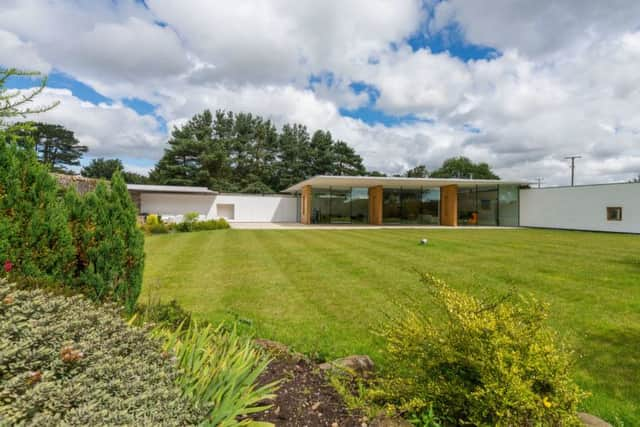

Ian, co-founder of the Cornwall estate agent Lillicrap Chilcott, recalls his first visit here. “I’m a stickler for quality and intricate detail,” he says, “and the second I walked through the front door and saw the quality of the finish here and the detailing, I knew this house was mine.”
The house has two distinct zones: the main reception room that extends to a staggering 47ft and incorporates seating, dining and kitchen areas, with entirely glazed elevations on the south and west; and the bedroom wing, which extends along the east elevation, with three bedrooms, including a master suite.
The reception hallway joins these two elements and leads to the oval drum room: a soundproofed music room with a glass skylight, and with a low-level boxed rectangular window – a design that has created the perfect acoustic environment. Externally, this section is clad in oak, and oak cladding frames the ground-to-ceiling windows in the bedroom wing, while the living section is defined in crisp white render with a dramatic extended roofline that provides a deep overhang, shading the glazed elevations.
Advertisement
Hide AdAdvertisement
Hide Ad“When you look at photos, you see the main broad sweep of the design,” Ian reflects, “but the more time you spend here, the more you notice the detail: the way the glazing subtly curves, or the ceiling in the main reception room that slopes in two directions like the wing of a plane. There’s a clerestory on the north and east sides that subtly makes it look like the roof is floating. And the edge of the roof looks wafer thin, again like the wing of an aeroplane.
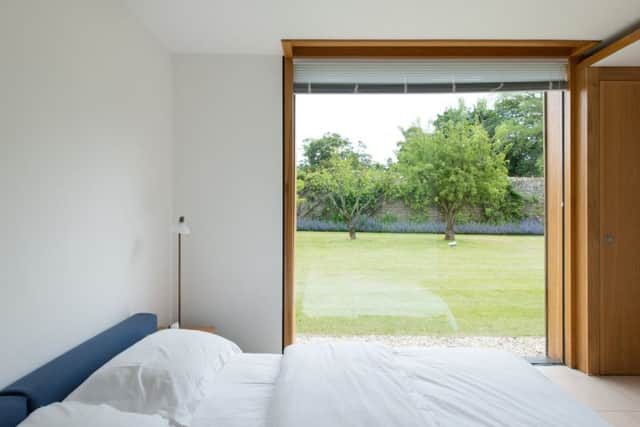

“There’s such clever joinery in the bedroom wing, ” Ian continues. “The oversized bespoke oak doors have a panel beside them that makes the doors look even more imposing, only you don’t realise the effect of this detail until you spend time in the house. There are shadow gaps instead of skirtings, and also around the door frames, and the door leading into the drum room is about 1ft thick and has been very subtly curved to match the shape of the room.”
The original owner turned out to be a local furniture maker, Max McCance, who constructed the hinged oak panels that separate the full-height windows in the main living space, forming doors to the garden, and McCance made other timber features throughout the house.
There’s integrated Lutron lighting, and there’s also lighting throughout the garden.
Every detail in this house has been as carefully considered and refined. Ian has also invested significantly in the property since he arrived – although you wouldn’t realise this, which was the point as the improvements Ian made look original. “The weather had taken its toll on the oak cladding and the right product hadn’t been used on it from the start, so this was sanded and refinished and sealed,” he says. To achieve this, a lot of the cladding was removed by the contractor, Stuart Niven & Sons from St Andrews, and taken to their workshop to be treated before being reinstated.
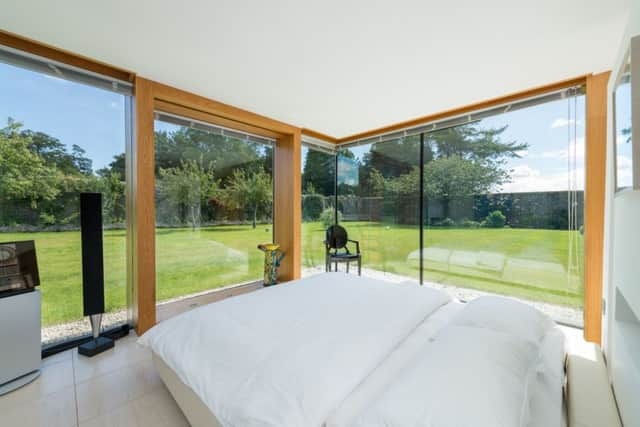

The internal flooring is limestone – other than in the kitchen and drum room which feature oak flooring – with underfloor heating throughout. Originally this limestone had continued outside on three sides of the house, with a broad terrace on the south side, but this material hadn’t fared well with the cold weather. Having used granite when creating terraced areas on another house, Ian specified the same finish here, only in the same colour as the limestone. “Originally, all the lines in the tiles had extended through the windows from inside out, so the contractor had to cut a few millimetres off each slab of granite to replicate this,” Ian explains. “I’m a bit of a perfectionist and I wanted it done right.”
Indeed, The Duncan House deserves this attention to detail. Ian also transformed the garden. “When I arrived the garden was simply lawn, so you had the contrast between the architecture and this green carpet and the wonderful stone walls,” he says. “But I love gardens, so I had this professionally planted over a period of four years, and the company I used brought in an expert on herbaceous borders.”
The new elements have been seamlessly integrated with the original fruit trees, while those stone walls are now lined with climbing plants.
Advertisement
Hide AdAdvertisement
Hide AdIan brought a few existing pieces to the interior, but then it naturally evolved. “I hung some colourful paintings by the Falmouth artist John Dyer and then added the Paul Smith rug,” he says, and the palette was inspired by this colour spectrum. Ian worked with an Edinburgh interior designer to choose additional pieces of furniture and, as he says, “I can’t drive through Crail without visiting Crail Pottery and buying more.”
The result is a combination of contemporary and midcentury design with artworks and handmade pieces that together create an entirely individual interior – as befits this entirely individual house.
• Offers over £795,000; contact joint selling agents CKD Galbraith on 01334 659980 or visit www.ckdgalbraith.co.uk or The Modern House on 020 3795 5920 or visit www.themodernhouse.net